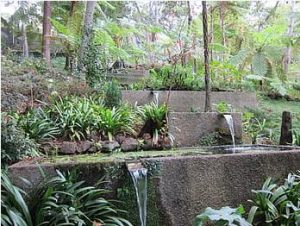 Residential retaining walls are in demand due to several reasons. They can be built for a variety of purposes, including retaining walls for a swimming pool, bridges, or another pond to raise water levels or drive flood plain out of the ground. Retaining or gravity walls can be of many different types: concrete slabs that go directly into the ground, reliable brick pavers, and wood casements.
Residential retaining walls are in demand due to several reasons. They can be built for a variety of purposes, including retaining walls for a swimming pool, bridges, or another pond to raise water levels or drive flood plain out of the ground. Retaining or gravity walls can be of many different types: concrete slabs that go directly into the ground, reliable brick pavers, and wood casements.
Advantages of these walls can vary. The first consideration is the benefit of not leaving soil behind. Earth’s natural processes affect lands, so by building the wall over them, it helps prevent erosion.
Besides, the earth’s organic cycle should make the wall a part of nature. Since no soil remains on the wall, no burying material is needed, and no piling is necessary, which means less expense for the homeowner.
One more benefit of these walls is that they are readily available, property owners can select whatever type of wall they need, without having to excavate and remove any surrounding vegetation or soil. It is a benefit for the environment.
RetainingWallBuilderMelbourne Residential Retaining Walls are famous because of their flexibility and ease of construction. They can be constructed with small or large shapes. They are also easy to maintain since there is very little soil to clean up.
Retaining walls can be built with structures built to match existing architecture. Sometimes they can be made with garden walls. There are several steps to build a wall.
The soil must be treated to make it easier to dig. It must be prepared well and removed from the land before digging. It will help avoid compaction, which can inhibit the work of the digger. Then a shovel is used to remove soil from the ground, and any other equipment needed to dig the wall.
When the top layer is removed, a grid pattern is used to align the blocks, and small stones are used to pave the edges. The block walls are topped with clay and topped with a stone mortar. The mortar is then packed down, and the wall is firmly set in place.
A wall needs to be planned before construction. It is crucial to plan the path of the retaining wall so that it runs in a straight line. It is also essential to make sure the way of the wall can easily be cleared when needed.
Once the walls are laid, they need to be marked. It is necessary to give a consistent look to the wall. It is also important to label each retaining wall so that they are set with the appropriate depth, to avoid water from going below the surface.
Materials needed for residential retaining walls can include concrete slabs, sand, gravel, clay, cement, rebar, and crushed stone. The materials can be bought at most home improvement stores.
A critical consideration for the homeowner is aesthetics. Do not use too much landscaping around the structure. The area around the RetainingWallBuilderMelbourne Residential Retaining Walls is the area that will not get to use, so leave it minimal and straightforward.